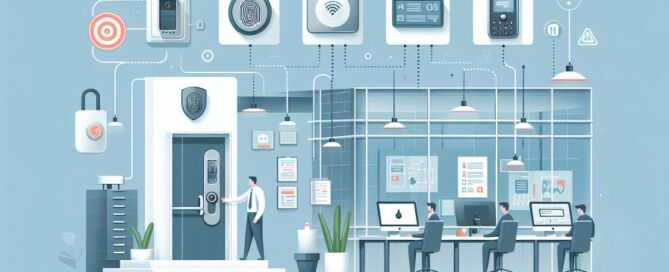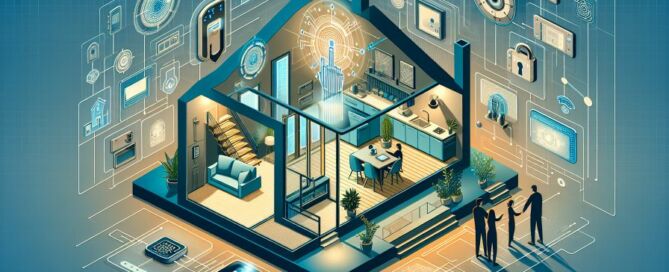How Home Automation Can Increase Your Property Value
Introduction to Home Automation and Property ValueHome automation, also known as domotics or smart home technology, refers to the use of intelligent systems to control various household functions electronically. This includes the integration of devices and appliances with home networks, enabling these systems to be managed remotely or set to operate autonomously.The adoption of home automation has been increasing due to advances in technology, the availability of high-speed internet, and a growing preference for convenience and energy efficiency. Consumer interest in smart home devices is driven by several factors, including the desire for enhanced security, energy savings, and the comfort
How to Choose the Right Alarm Monitoring Plan for Your Needs
Understanding Alarm Monitoring BasicsAlarm monitoring is a critical component of a security system designed to alert you and appropriate authorities to potential security breaches. Understanding the basics of alarm monitoring can help you make a more informed decision when selecting a plan that suits your needs.What is Alarm Monitoring?Alarm monitoring is a service that provides 24/7 surveillance of your security system by a professional monitoring center. When an alarm goes off, the system sends a signal to the monitoring center, which then takes appropriate action, such as contacting you, a designated contact, or emergency services.How Does It Work?An alarm monitoring
Home Automation: Making Your Life Easier and More Secure
Introduction to Home AutomationHome automation refers to the use of technology to control and manage various household functions and features electronically. This can include controlling lighting, heating, security systems, and even kitchen appliances through a centralized system, often accessed via a smartphone or other internet-connected device.The primary goal of home automation is to enhance the convenience, comfort, energy efficiency, and security of a home. The concept has been around since the early 20th century, but it has seen significant advancements in recent years, thanks to the rapid development in technology, especially the Internet of Things (IoT).Modern home automation systems offer
Leveraging Structured Cabling for Enhanced Efficiency in Commercial Security System Installations
Introduction to Structured Cabling in Commercial Security SystemsStructured cabling refers to a standardized approach to installing and organizing the physical infrastructure that supports data, voice, and video communications within a commercial environment. In the context of commercial security systems, structured cabling plays a crucial role in ensuring efficient and reliable operation.Structured cabling systems consist of various components, including cables, patch panels, and hardware, designed and installed according to industry standards such as those established by the Telecommunications Industry Association (TIA) and the International Organization for Standardization (ISO). These standards help ensure interoperability, scalability, and performance consistency across different systems and
Optimizing Residential Security: The Role of Smart CCTV Installations in Modern Homes
Introduction to Smart CCTV Systems in Modern HomesHome security has seen significant advancements with the integration of smart CCTV systems. These systems represent a convergence of traditional surveillance technology with modern smart home capabilities, offering enhanced security and convenience.Smart CCTV systems are designed to provide real-time monitoring and advanced features that are not possible with conventional CCTV cameras. According to a report by MarketsandMarkets, the smart home market, including smart surveillance, is expected to grow from $78.3 billion in 2020 to $135.3 billion by 2025, at a CAGR of 11.6%. This growth indicates a rising interest and adoption of smart
Enhancing Business Safety: The Integration of Access Control and Commercial Security Systems in Modern Workspaces
Introduction to Modern Business Safety and Security Systems Ensuring the safety and security of business environments has become increasingly important in modern times. The integration of access control and commercial security systems plays a crucial role in protecting assets, information, and, most importantly, individuals. Businesses are investing in sophisticated security measures to mitigate risks associated with unauthorized access, theft, and other security threats. Modern business safety and security systems comprise several advanced technologies designed to control access, monitor activities, and respond to potential security incidents. These systems are built with the primary goal of creating a secure workspace that reduces
Future of Alarms: Structured Cabling with Advanced Access Control Systems
The Evolution of Home Security: Historical Context and Current Trends Home security systems have undergone significant advancements over the past several decades, evolving from simple mechanical locks and alarms to sophisticated, technology-driven solutions. Historically, home security was primarily concerned with physical barriers and basic alarm systems designed to notify homeowners of unauthorized entry. These systems, while effective for their time, offered limited functionality and were often plagued by false alarms and reliability issues. One of the first major advancements in home security was the introduction of electrical alarm systems in the late 19th century. These systems used rudimentary voltage circuits







